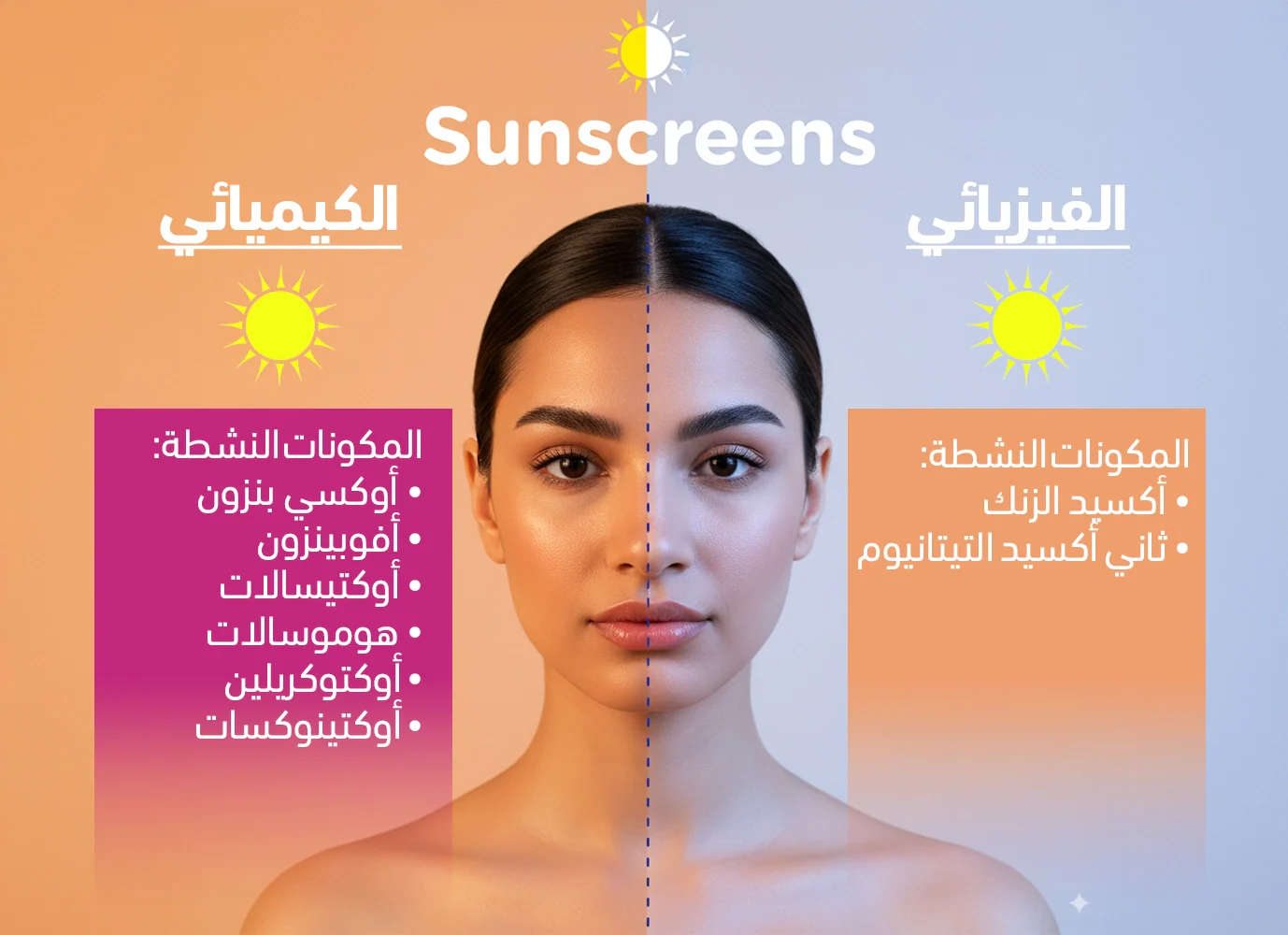Article: How do you know your skin type

How do you know your skin type
Dry skin
Is characterized by a lack of oil and moisture, resulting in flaking, itching, and tightness. People with dry skin should use gentle, non-foaming cleansers, and moisturize with a heavy, oil-based cream or lotion.
A dry skin care routine should include the following steps:
1. Cleanse gently with a hydrating, non-foaming cleanser. Avoid using hot water, which can strip the skin of its natural oils.
2. Exfoliate once or twice a week to remove dead skin cells and unclog pores. Use a gentle exfoliant to avoid irritation.
3. Apply a hydrating toner to help restore the skin's natural pH balance and to prepare the skin for moisturizing.
4. Use a heavy, oil-based moisturizer to hydrate and protect the skin. Look for ingredients like glycerin, hyaluronic acid, or ceramides.
5. Use a face mask once a week to provide extra hydration and nourishment.
6. Apply sunscreen daily with SPF 30 or higher to protect the skin from UV rays.
7. Avoid using harsh, stripping skincare products and hot showers, which can dry out the skin.
8. Use a humidifier to add moisture to the air in your home, especially during the dry winter months.
It's also important to stick to a consistent routine and be patient, as it can take time for the skin to adjust and for the effects to become visible. If you're still struggling with dry skin, it may be beneficial to speak with a dermatologist for a personalized skincare routine.
Oily skin
Is characterized by excess oil production, resulting in a shiny appearance and clogged pores. People with oily skin should use a gentle, foaming cleanser and a lightweight, oil-free moisturizer.
An effective oily skin care routine includes the following steps:
1. Cleanse twice a day with a gentle, oil-free cleanser.
2. Exfoliate once or twice a week to remove dead skin cells and unclog pores.
3. Use a toner to remove any remaining traces of makeup or dirt and to restore the skin's natural pH balance.
4. Apply a light, oil-free moisturizer to hydrate the skin without clogging pores.
5. Use a face mask once a week to remove impurities and excess oil.
6. Apply sunscreen daily with SPF 30 or higher to protect the skin from UV rays.
7. Avoid using heavy, oily products on the skin, and be sure to remove all makeup before going to bed.
It's also important to stick to a consistent routine and be patient, as it can take time for the skin to adjust and for the effects to become visible. If you're still struggling with oily skin, it may be beneficial to speak with a dermatologist for a personalized skincare routine.
Combination skin
Is characterized by a combination of dry and oily areas, typically an oily T-zone (forehead, nose, and chin) and dry cheeks. People with combination skin should use a gentle, non-foaming cleanser, and moisturize with a lightweight, oil-free moisturizer on the oily areas and a heavy, oil-based cream or lotion on the dry areas.
A combination skin care routine should balance the needs of both oily and dry areas of the face. The routine should include the following steps:
1. Cleanse twice a day with a gentle, non-foaming cleanser. Avoid using hot water, which can strip the skin of its natural oils.
2. Exfoliate once or twice a week to remove dead skin cells and unclog pores. Use a gentle exfoliant to avoid irritation.
3. Apply a toner to remove any remaining traces of makeup or dirt and to restore the skin's natural pH balance. Look for a toner that is hydrating for dry areas and mattifying for oily areas.
4. Use a light, oil-free moisturizer for oily areas and a heavy, oil-based moisturizer for dry areas.
5. Use a face mask once a week to remove impurities and excess oil from oily areas and provide extra hydration and nourishment for dry areas.
6. Apply sunscreen daily with SPF 30 or higher to protect the skin from UV rays.
7. Avoid using heavy, oily products on the skin, and be sure to remove all makeup before going to bed.
8. Pay attention to the needs of your skin, and adjust your routine as necessary.
It's also important to stick to a consistent routine and be patient, as it can take time for the skin to adjust and for the effects to become visible. If you're still struggling with combination skin, it may be beneficial to speak with a dermatologist for a personalized skincare routine.
Sensitive skin
Is characterized by easily irritated and reddened skin that reacts to skincare products, fragrances, and harsh ingredients. People with sensitive skin should use gentle, fragrance-free products, and avoid harsh ingredients such as alcohol, retinoids, and exfoliants.
A sensitive skin care routine should be gentle and non-irritating, in order to avoid flare-ups. The routine should include the following steps:
1. Cleanse gently with a non-foaming, fragrance-free cleanser. Avoid using hot water, which can strip the skin of its natural oils.
2. Exfoliate gently, if at all. If you choose to exfoliate, use a very gentle exfoliant, such as a chemical exfoliant with lactic acid or glycolic acid, or a physical exfoliant with very fine granules. Exfoliate once or twice a week at most.
3. Apply a fragrance-free, hydrating toner to remove any remaining traces of makeup or dirt and to restore the skin's natural pH balance.
4. Use a fragrance-free, hypoallergenic moisturizer to hydrate and protect the skin. Look for ingredients like glycerin, hyaluronic acid, or ceramides.
5. Use a face mask once a week, if at all, and make sure it's fragrance-free and hypoallergenic.
6. Apply sunscreen daily with SPF 30 or higher to protect the skin from UV rays, and make sure it's fragrance-free and hypoallergenic.
7. Avoid using harsh, stripping skincare products, fragrances, and hot showers, which can dry out the skin.
8. Pay attention to the needs of your skin and adjust your routine as necessary.
It's also important to stick to a consistent routine and be patient, as it can take time for the skin to adjust and for the effects to become visible. If you're still struggling with sensitive skin, it may be beneficial to speak with a dermatologist for a personalized skincare routine.
Normal skin
Is characterized by a balanced level of oil and moisture, with a clear complexion and minimal blemishes. People with normal skin should maintain a consistent skincare routine using gentle, non-foaming cleansers and a lightweight, oil-free moisturizer.
A normal skin care routine should aim to maintain the skin's natural balance and prevent any issues such as dryness, oiliness, or breakouts. The routine should include the following steps:
1. Cleanse twice a day with a gentle, non-foaming cleanser. Avoid using hot water, which can strip the skin of its natural oils.
2. Exfoliate once or twice a week to remove dead skin cells and unclog pores. Use a gentle exfoliant to avoid irritation.
3. Apply a toner to remove any remaining traces of makeup or dirt and to restore the skin's natural pH balance.
4. Use a light, oil-free moisturizer to hydrate the skin without leaving it feeling greasy.
5. Use a face mask once a week to remove impurities and provide extra hydration and nourishment.
6. Apply sunscreen daily with SPF 30 or higher to protect the skin from UV rays.
7. Avoid using heavy, oily products on the skin, and be sure to remove all makeup before going to bed.
8. Pay attention to the needs of your skin, and adjust your routine as necessary.
It's also important to stick to a consistent routine and be patient, as it can take time for the skin to adjust and for the effects to become visible. It's also important to eat a balanced diet, stay hydrated and get enough sleep and exercise to maintain a healthy skin.
Acne-prone skin
Is characterized by frequent breakouts and clogged pores. People with acne-prone skin should use a gentle, non-foaming cleanser and a lightweight, oil-free moisturizer with salicylic acid or benzoyl peroxide to help reduce acne.
An acne-prone skin care routine should focus on preventing breakouts and unclogging pores, while also preventing over-drying and irritation. The routine should include the following steps:
1. Cleanse twice a day with a gentle, salicylic acid or benzoyl peroxide-based cleanser to help unclog pores and prevent breakouts. Avoid using hot water, which can strip the skin of its natural oils.
2. Exfoliate once or twice a week to remove dead skin cells and unclog pores. Use a gentle exfoliant, such as a chemical exfoliant with lactic acid or glycolic acid.
3. Apply a toner to remove any remaining traces of makeup or dirt and to restore the skin's natural pH balance. Look for a toner that is specifically formulated for acne-prone skin, such as one that contains salicylic acid or witch hazel.
4. Use a light, oil-free moisturizer to hydrate the skin without leaving it feeling greasy. Avoid using heavy, oily products, which can clog pores.
5. Use a face mask once a week to remove impurities and provide extra hydration and nourishment.
6. Apply a spot treatment with benzoyl peroxide or salicylic acid to target individual breakouts.
7. Apply sunscreen daily with SPF 30 or higher to protect the skin from UV rays, and make sure it's non-comedogenic (won't clog pores).
8. Avoid using heavy, oily products on the skin, and be sure to remove all makeup before going to bed.
It's important to stick to a consistent routine and be patient, as it can take time for the skin to adjust and for the effects to become visible. If you're still struggling with acne, it may be beneficial to speak with a dermatologist for a personalized skincare routine or for prescription medication.
To determine your skin type, you can consult a dermatologist or try the "barefaced test." This involves going without makeup and washing your face with a gentle cleanser, then observing your skin's appearance and texture throughout the day. Pay attention to your T-zone (forehead, nose, and chin) and your cheeks, as well as any areas that tend to be dry or oily. With this information, you can tailor your skincare routine to your specific skin type and achieve healthy, beautiful skin.


1 comment
مفيد جدا, أكتشفت ان بشرتي مختلطه وهذا راح يساعدني في اختيار المنتجات المناسبه لي
Sarah
Leave a comment
This site is protected by hCaptcha and the hCaptcha Privacy Policy and Terms of Service apply.